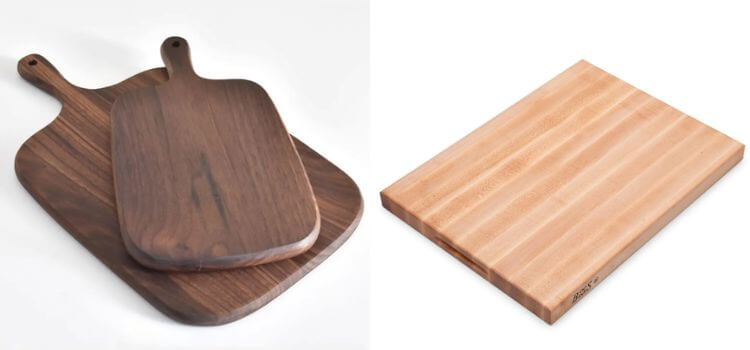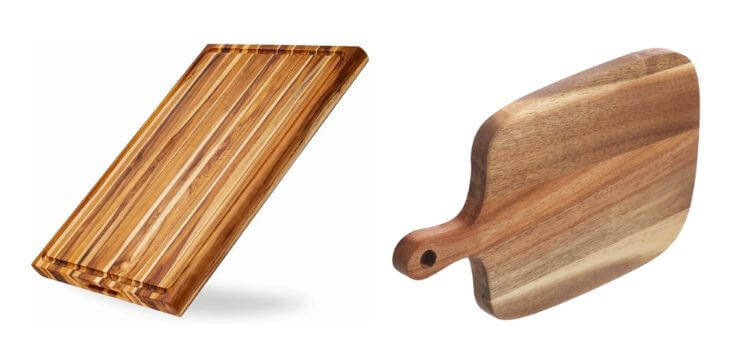As an Amazon Associate, I earn from qualifying purchases

Selecting the right finish for a cutting board is crucial to ensuring both the safety of your food and the longevity of the board itself. Among the many options available, tung oil stands out as a popular choice for finishing wooden surfaces. Known for its natural origin and protective qualities, tung oil has been used for centuries to enhance and preserve the beauty of wood.
This article aims to evaluate the safety of tung oil when applied to cutting boards, exploring its properties, benefits, potential risks, and how it compares to other finishing oils.
What is Tung Oil?
Tung oil is derived from the seeds of the tung tree, which is native to China and other parts of Asia. The process of producing tung oil begins with harvesting the seeds, which are then pressed to extract the oil. This raw oil undergoes a refining process to remove impurities, resulting in a clear, amber liquid that is highly valued for its finishing properties.
One of the most appealing aspects of tung oil is its natural, non-toxic nature when fully cured. Unlike synthetic finishes, tung oil penetrates deeply into the wood, forming a flexible, water-resistant coating that protects against moisture and enhances the wood’s natural beauty. This makes it a favored choice for food-related applications, including cutting boards.
Benefits of Tung Oil for Cutting Boards
- Water-Resistant Properties: Tung oil creates a moisture barrier, preventing wood from swelling or warping due to frequent exposure to water, which is crucial for cutting boards that are regularly washed.
- Durability and Longevity: The oil penetrates deeply into wood fibers, strengthening the board and making it more resistant to wear and tear. This is particularly beneficial for cutting boards that undergo heavy use, helping them maintain structural integrity over time.
- Aesthetic Appeal: Tung oil enriches the wood grain and enhances its natural color, providing a warm, rich finish. This adds elegance to any kitchen, making the cutting board a beautiful and functional accessory.
Potential Risks of Using Tung Oil on Cutting Boards
- Allergic Reactions: Some individuals may experience allergic reactions or sensitivities to tung oil during application, leading to discomfort or skin issues.
- Skin Irritation: Direct skin contact with tung oil can cause irritation in susceptible individuals, highlighting the need for protective measures.
- Fume Inhalation: Inhaling tung oil fumes can irritate the respiratory system, making it crucial to ensure proper ventilation while working with the oil.
- Curing Process: Tung oil is initially in a liquid state that can be harmful if ingested. It requires a curing process that can take days to weeks, during which it undergoes a chemical transformation to become non-toxic.
- Food Safety Misconceptions: Misunderstandings often arise regarding tung oil’s safety. Once fully cured, it is safe for food-contact applications, but it’s vital to wait for complete drying before using treated items for food preparation.
- Environmental Conditions: The curing time for tung oil can vary based on environmental factors, making it essential to monitor conditions to ensure full curing and safety.
Comparisons with Other Oils for Cutting Boards

When comparing tung oil to other oils used for finishing cutting boards, several factors come into play:
- Mineral Oil: Mineral oil is a common choice for cutting boards due to its ease of application and affordability. However, it does not penetrate as deeply as tung oil and may require more frequent reapplication. Mineral oil is also odorless and tasteless, which is a plus for those concerned about altering the flavor of foods.
- Linseed Oil: Another natural oil, linseed oil, shares some properties with tung oil, such as enhancing the wood’s natural appearance. However, it can yellow over time and may not offer the same level of water resistance. Boiled linseed oil often contains additives that may not be food-safe, making pure tung oil a preferable option.
- Walnut Oil: Walnut oil is a food-safe alternative that penetrates well and provides a rich finish. It is often recommended for its non-toxic properties. However, those with nut allergies should avoid it. Tung oil, being nut-free, offers a safer alternative for allergen-conscious households.
In terms of environmental impact, tung oil is a sustainable choice, as it is derived from a renewable resource and does not contain harmful VOCs (volatile organic compounds) like some synthetic finishes.
Application Tips for Tung Oil on Cutting Boards
To achieve the best results with tung oil, follow these application steps:
- Preparation: Start by sanding the cutting board to a smooth finish, removing any existing finishes or impurities. Clean the surface thoroughly to ensure the oil adheres properly.
- Application: Using a clean cloth or brush, apply a thin, even coat of tung oil to the entire surface of the board. Allow the oil to soak into the wood for 20-30 minutes, then wipe away any excess oil with a clean cloth.
- Curing: Let the board sit in a well-ventilated area to dry. Depending on the climate, this can take anywhere from 24 hours to several days. For best results, apply multiple coats, allowing each to dry thoroughly before applying the next.
- Maintenance: To keep the cutting board in excellent condition, reapply tung oil as needed, typically every few months or when the wood appears dry. Regular maintenance will help preserve the board’s water resistance and aesthetic appeal.
Conclusion
Tung oil is a safe and effective choice for finishing cutting boards, offering a range of benefits from water resistance to aesthetic enhancement. While there are some potential risks during application, these can be easily managed with proper precautions and curing. When selecting a finish for your cutting board, consider tung oil’s natural properties, durability, and ability to bring out the wood’s beauty.
Ultimately, the choice of finish will depend on personal preferences and the specific needs of your kitchen environment. With the right care and application, tung oil can provide a safe and beautiful finish for your cutting board, enhancing both its functionality and appearance.
FAQ
Is tung oil food grade safe?
Yes, tung oil is food grade safe once fully cured. It becomes non-toxic after drying, making it suitable for use on cutting boards and other kitchen items. Ensure proper application and allow sufficient curing time to ensure it is completely safe for food contact.
What are the disadvantages of tung oil?
Tung oil can take a long time to cure fully, requiring several days to weeks. It may cause allergic reactions during application. It’s also pricier than some alternatives and requires multiple coats for optimal protection, which can be time-consuming to apply and maintain.
How do you seal a tung oil cutting board?
To seal a cutting board with tung oil, sand the surface smoothly, apply a thin coat of tung oil, and let it soak for 20-30 minutes. Wipe off excess oil and allow it to cure for 24 hours. Repeat the process with additional coats for a durable seal.
What kind of oil is good for cutting boards?
Mineral oil, tung oil, and walnut oil are excellent choices for cutting boards. Mineral oil is affordable and easy to apply, while tung and walnut oils enhance the wood’s natural beauty and provide water resistance. Choose based on personal preference and any potential allergy concerns.
As an Amazon Associate, I earn from qualifying purchases